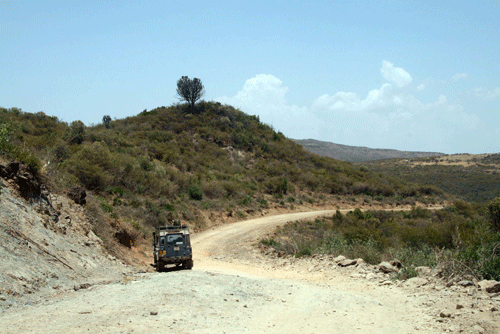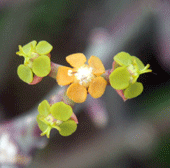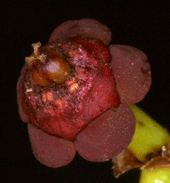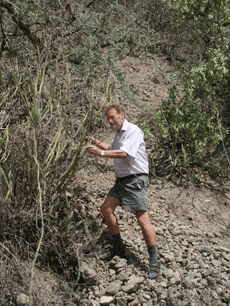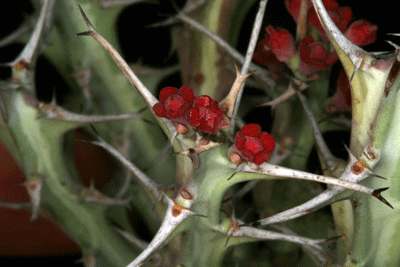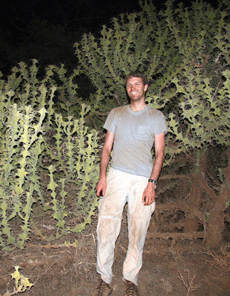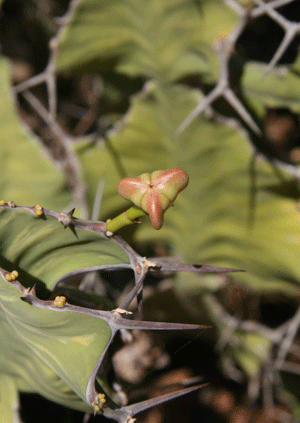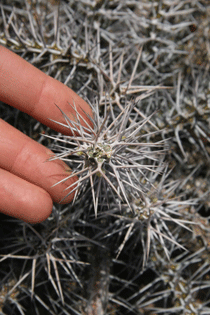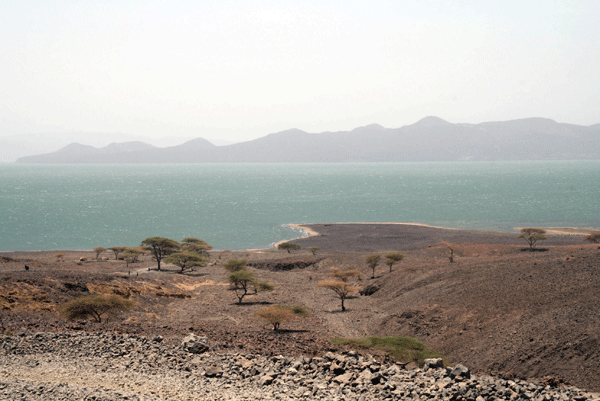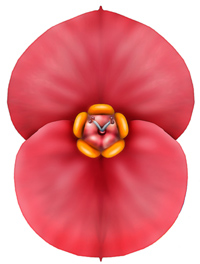
|
Euphorbia - Fieldwork Activities | ||||||||||||||||||||
Home Project Participants About Euphorbia Fieldwork News Data Portal Interactive Key Links Contact Us | Kenya, Mar 2009 Participants: Jeff Morawetz and Emily Wabuyele. Trip account by Jeff Morawetz.
I spent one month collecting Euphorbia in Kenya. I had worked in Kenya during my dissertation, and returning to the East African herbarium (EA) was really wonderful. Since my last trip in 2005 the National Museums of Kenya (where the EA herbarium is housed) had undergone some renovations, and the new gallery is quite spectacular. But on to Euphorbia! On this trip I worked with Dr. Emily Wabuyele. She is a drylands specialist and Aloe expert, and is interested in working on succulent Euphorbia. She has a great eye for them, and can easily spot small clumps from the car going 50 km/h on bumpy dirt roads. We took a trip up to northern Kenya, though due to the road conditions and time constraints, we had to remove Lodwar from our list of destinations. We first visited the Cherangani Hills, then Lake Baringo, Maralal, Tuum, Ndoto Mountains, South Horr, Loiyangalani, Marsabit, Isiolo & Meru before returning to Nairobi. We had about two days to organize ourselves, and then we headed towards the coast, stopping in Voi, Taita Hills, Kalifi, Malindi, Kibwezi & Machakos.
We found many Euphorbia species, both succulent and non-succulent. Of particular interest to me were the species with red cyathia, and also forked spines, so finding E. meridionalis (a species with red cyathia and forked spines!) on Lukenya Hill on our last day in the field was really great. We found some large succulent species such as E. bussei, E. nyikae, E. obovalifolia and of course E. candelabrum, and some large succulent shrubs such as E. breviarticulata, as well as the slim-stemmed shrubs like E. heterochroma and E. heterospina. We also were shown E. scarlatina by Len Newton (see photo below), but unfortunately it was not in flower at the time. Of the smaller succulent species we collected were E. buruana and E. vittata, as well as the single-spined species E. kalisana ("kali sana" is Swahili for "very spiny") and E. similiramea. We also were able to find the woody shrub E. scheffleri a few times, as well as E. usambarica in a forested part of the Taita Hills. Other succulent species we colleted along the way are Monadenium guentheri, M. stapelioides and Synadenium grantii (all now recognized within Euphorbia). After returning to Nairobi we got to spend an enjoyable Sunday with Len Newton visiting one of the few existing sites of E. cussonioides, conveniently located on the property of a hotel in Thika (though not so convenient for this species continued existence in the wild), so that we were able to enjoy a refreshing soda (very cold, or baridi sana) before continuing our days work. We checked on the population of E. brevitorta existing at the edge of the Carnivore Restaurant's parking lot on the outskirts of Nairobi, but the adjacent land had been purchased and a new fence erected, and with that the remaining plants had apparently been extirpated from the site (though Emily's keen eyes were able to spot some clumps on the other side of fence which may be E. brevitorta, so hopefully it still remains there at least until that land is developed)
I was very fortunate to be allowed to visit the gardens of several people who cultivate Euphorbia at their homes, allowing me to collect species I was unable to locate in the field. I give very special thanks to the kindness of Quentin Luke, Len Newton and Ann & Ian Robertson, all of whom invited me to their homes for tea and Euphorbia collecting. I would like to thank everyone at EA for again welcoming me so kindly. I felt as if I had never left. Also many thanks go to our experienced driver Charles Maina, and the National Museums of Kenya and Kenya Wildlife Service for allowing me to collect in Kenya. Ninafurahi saa zote kuwa kwa Kenya! Ninatumaini kurudi hivi karibuni. After Kenya I continued on my journey to Tanzania, which you can read about in the next installment of the PBI Field Work reports.
| ||||||||||||||||||||
|
© PBI Euphorbia Project | |||||||||||||||||||||
